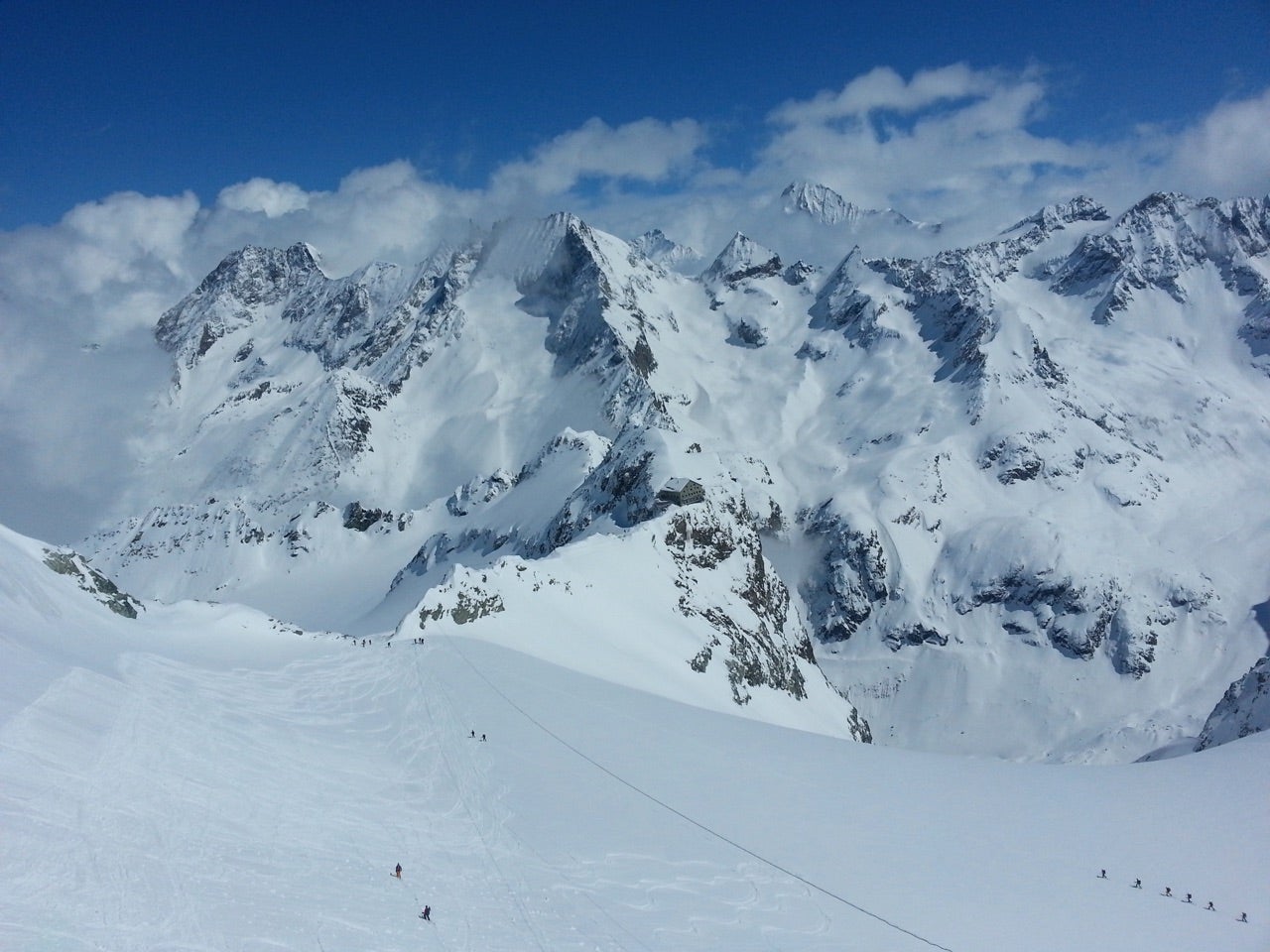A lot of logistics go into a ski tour of the original Haute Route from Chamonix to Zermatt. Here are the details for how it will come together if you go with Pro Guiding Service, and some tips for how to make it all go smoothly.
HOW DO I GET TO CHAMONIX?
The best way to get to Chamonix is via bus from the Geneva Airport. There are several private companies that provide transportation. Here are couple of links: http://www.chamexpress.com; or https://www.mountaindropoffs.com/.
Further info can be obtained by contacting the office directly at 425 888 6397 or info@proguiding.com. These buses or minivans leave from right outside the baggage claim area.
RELATED: Skiing The Haute Route
SHOULD I CHANGE DOLLARS INTO EUROS IN GENEVA?
It’s better to wait until you get to Chamonix. That way you pay the change rate only once (as opposed to from dollars to Swiss Francs, then to Euros). Wait until you are in France to change Dollars into Euros. But we recommend changing dollars into Swiss Francs in Geneva, as the majority of the trip actually takes place in Switzerland. In fact all the huts we are staying in, are Swiss huts. If you do not want to change too much money into Swiss Francs right away, you can also get more money in Verbier on the second day of the trip.
HOW MUCH "POCKET MONEY" DO I NEED"
It’s extremely important that you stay properly hydrated and fluids are not cheap in high alpine huts. Count on spending about sfr. 15 to 20 per day on tea, water, beer and wine. Of course there are other things that will tempt you such as chocolate, cakes, sandwiches and the undeniable Rosti. All things added up, sfr. 200 for the week should probably do it.
RELATED: So You Want To Climb In The Alps
DO I HAVE TO CARRY ALL THE LUNCH FOR THE ENTIRE WEEK?
You have options. You can carry all your lunch food (as it’s not included in the guided trip cost), but hardly anyone does it. Most people buy some bread, cheese, dried meat, sausage, chocolate, trail mix etc. in Chamonix that will last for a couple of days. Then they repeat this in Verbier and end up supplementing it with some items they buy at the huts later in the week. You can also have the hut keeper prepare a lunch packet. They are good, but somewhat pricey at about $12 per lunch.
HOW DO WE GET THE EXTRA LUGGAGE TO ZERMATT?
If you go with Pro Guiding Service, we will do it for you, and it’s included in the trip. Please make sure your extra luggage consists of one manageable piece.
DO YOU SPEAK THE LOCAL LANGUAGE?
Yes, we speak French, German and Italian. Speaking the right language or even better the right dialect does not only simplify logistics, but it opens a lot of doors to extra favors.
RELATED: Old-School Spring Ski Touring From Chamonix To Zermatt
DO I HAVE TO MAKE TRAIN RESERVATIONS FOR THE TRAIN RIDE BACK TO THE AIRPORT AT THE END OF THE TRIP?
There is no need for that. You will be able to buy a ticket at the counter in Zermatt and just walk onto the train. The travel time from Zermatt to Geneva is about 3.5 hours.
If you intend to do further travel in Switzerland you might consider purchasing the Halfprice Pass from the Swiss Railway System. Check it out at: http://www.sbb.ch/en/travelcards-and-tickets/railpasses/half-fare-travelcard.html. The cost of a one month pass is roughly Sfr. 125, but once you have the pass, all public transportation is, well, half price. You could start saving money very quickly.
WHAT ABOUT TRIP CANCELLATION INSURANCE AND RESCUE INSURANCE?
The trip cost does not include trip cancellation insurance or rescue insurance. We highly recommend that you get trip cancellation insurance. Rescue insurance is also not included, because it is relatively complicated to insure a person for the three countries we are travelling in. Some people have rescue insurance already, so it does not make sense for us to include it in the trip cost. We recommend the rescue insurance from the American Alpine Club http://americanalpineclub.org/p/global_rescue. With rescue insurance from the AAC, your coverage is worldwide.
REGA of Switzerland is a good alternative at a very reasonable price. This type of insurance works very well for Americans who intend to spend all their time in Switzerland. REGA members who are not Swiss Citizens are covered for rescues within Switzerland only. In case of the Haute Route, this would therefore not include the first half day of the trip. For more information please check out: http://www.rega.ch/en/support-rega/faq.aspx. Some medical insurances appear to include rescue insurance, but they have high deductibles for these services. For context, the average helicopter rescue in Switzerland costs between sfr 2500 and 4000.
